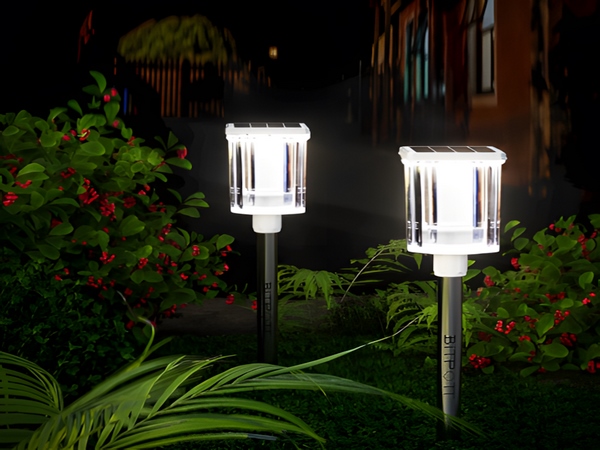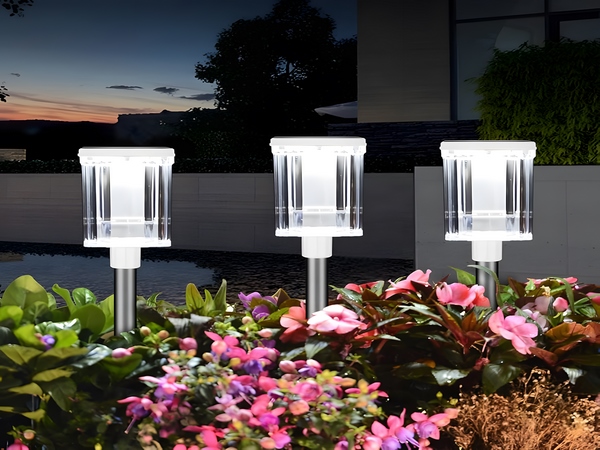
Nowadays, many households consider solar garden lights when selecting appropriate lighting for their yards, which indicates the high value of solar garden lights. However, purchasing poor-quality solar garden lights can adversely affect the entire garden and may not provide an effective decorative function. What should be noted when buying solar garden lights? Here are some insights shared by Century Sunshine Lighting.
1. Load
Solar lighting products advertise energy efficiency and environmental friendliness, so the load must be energy-saving and long-lasting. Typically, we use LED lights, 12V DC energy-saving lamps, and low-pressure sodium lamps. Most lawn lights utilize LEDs as the light source, which have a long lifespan of over 100,000 hours and low operating voltage, making them highly suitable for solar lawn lights. Garden lights usually adopt LED lamps or 12V DC energy-saving lamps, which run on DC voltage without the need for inversion, ensuring convenience and safety. Street lights typically use 12V DC energy-saving lamps and low-pressure sodium lamps; while low-pressure sodium lamps have high luminous efficacy, they are comparatively expensive and less frequently used.
2. Solar Panels
The primary function of solar panels is to convert light energy into electrical energy, a phenomenon known as the photovoltaic effect. Among the various types of solar cells, the most common and practical ones are monocrystalline silicon solar cells, polycrystalline silicon solar cells, and amorphous silicon solar cells. In the eastern regions with ample sunlight, polycrystalline silicon solar cells are recommended due to their simpler production process and lower cost compared to monocrystalline silicon cells, with increasing conversion efficiency in recent years. In southern regions with frequent rain and less sunlight, monocrystalline silicon solar cells are preferred due to their stable electrical performance. Amorphous silicon solar cells perform well in low indoor sunlight conditions, as they have lower requirements for sunlight.

3. Solar Energy Storage Batteries
Given that solar photovoltaic systems have unstable input energy, a battery storage system is generally required for operation, and solar lights are no exception; batteries are essential for functionality. Common options include lead-acid batteries, Ni-Cd batteries, and Ni-H batteries, and the choice of battery capacity directly affects the system’s reliability and cost.
4. Solar Charge and Discharge Controller
Regardless of the size of solar lighting, a high-quality charge and discharge control circuit is indispensable. To prolong battery life, charging and discharging conditions must be regulated to avoid overcharging and deep discharging of the battery. Additionally, due to the extreme instability of input energy in solar photovoltaic systems, the control of charging batteries in these systems is more complex than that of regular battery charging. In the design of solar lights, the success or failure often hinges on the performance of the charge and discharge control circuit. Without a high-quality control circuit, solar lights will not function well.

This concludes our shared insights on important factors to consider when purchasing solar street lights. Additionally, when selecting solar garden lights, it is essential to check for the availability of professional after-sales service, as many manufacturers can provide on-site installation assistance.



